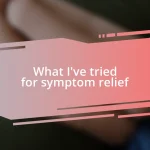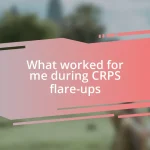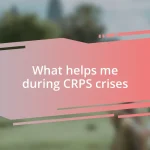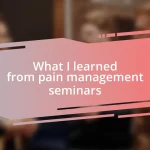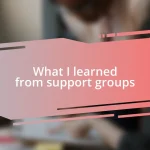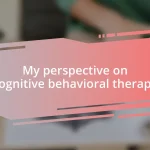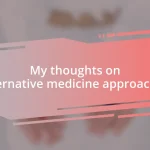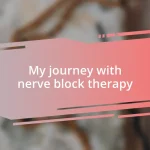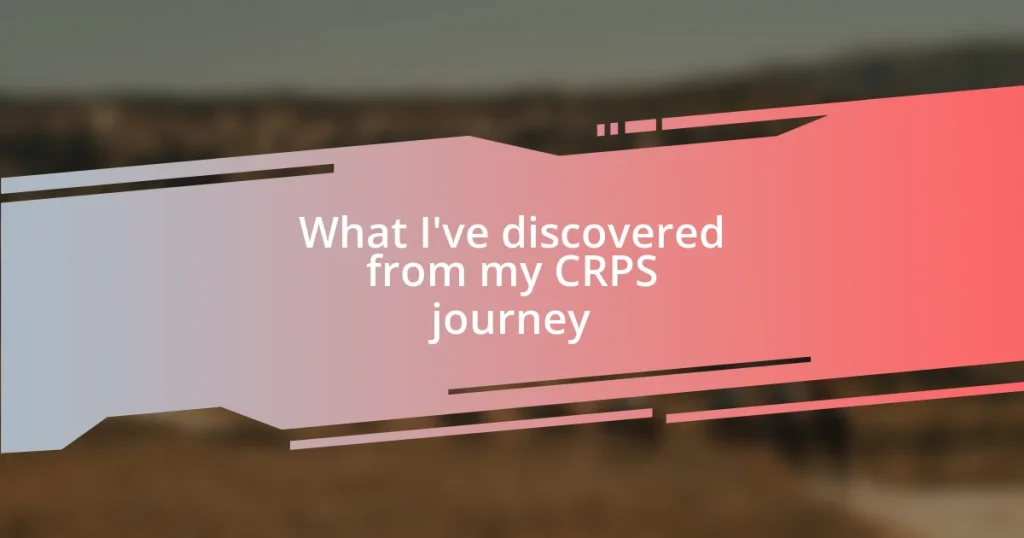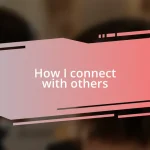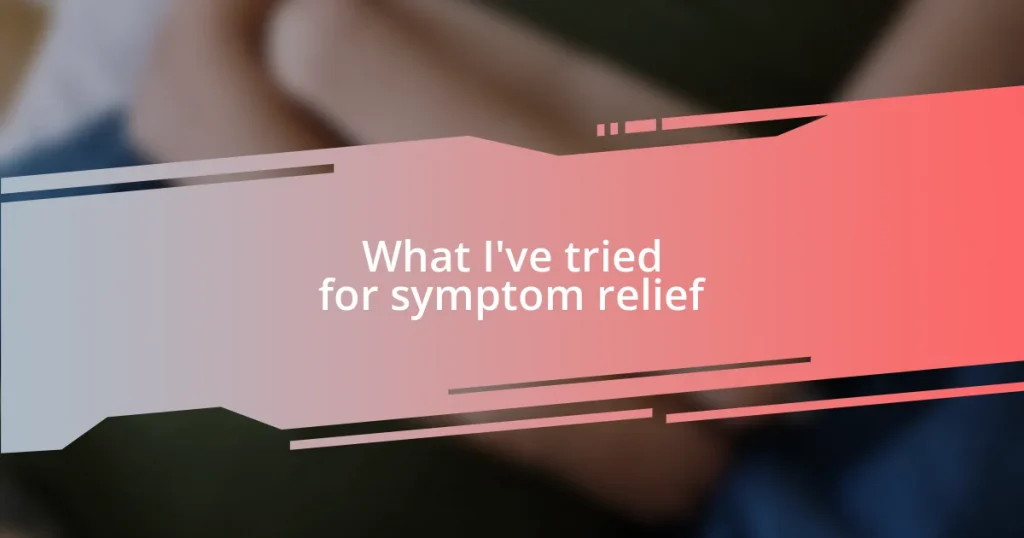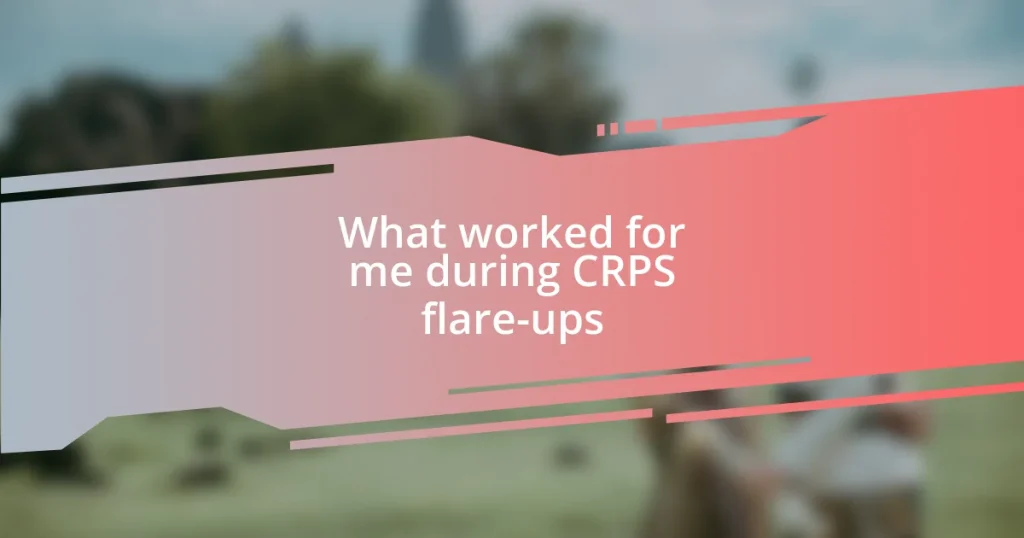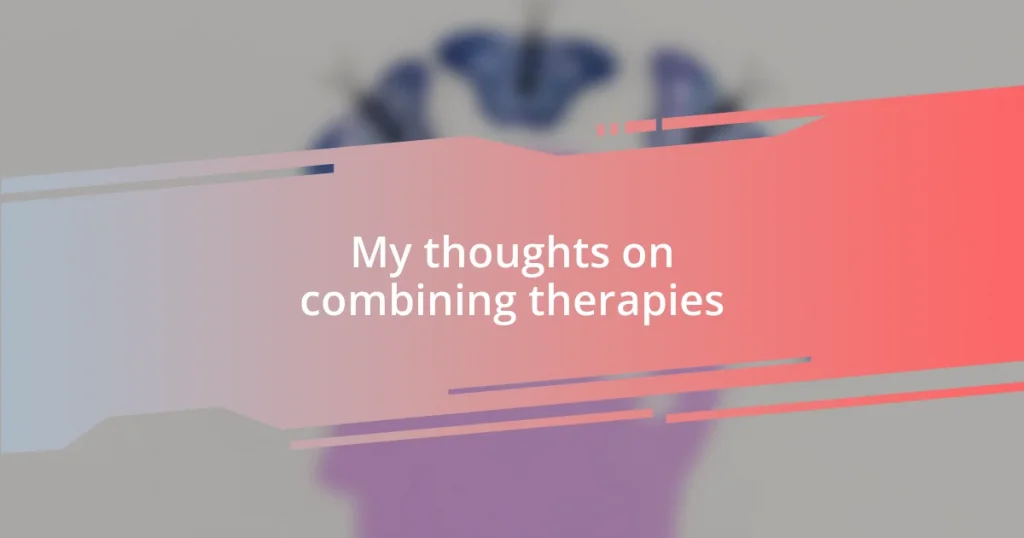Key takeaways:
- Understanding CRPS involves recognizing unique symptoms such as extreme skin sensitivity, color changes, and swelling, which are essential for effective communication with healthcare providers.
- Engaging in mental health support, including therapy and support groups, is crucial for coping with the emotional weight of CRPS, fostering community connections and resilience.
- Sharing personal experiences not only aids in individual healing but also empowers others, creating a support network that emphasizes the strength found in vulnerability and mutual understanding.
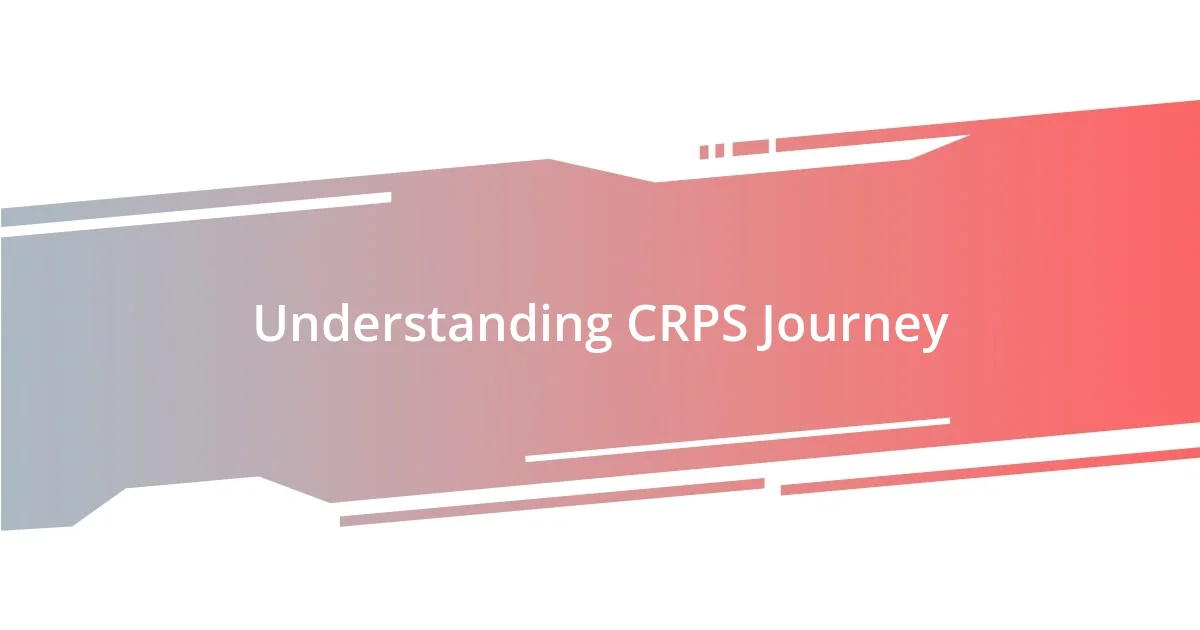
Understanding CRPS Journey
CRPS, or Complex Regional Pain Syndrome, is a condition that can feel isolating both physically and emotionally. I remember the first time I was introduced to the term; it sounded so foreign, yet it encapsulated everything I was experiencing. How could a seemingly simple injury lead to such an array of symptoms that affected my daily life in profound ways?
As I navigated my CRPS journey, I found that understanding my body became a crucial part of coping. There were days when even the lightest touch felt unbearable, igniting a pain I struggled to articulate. Have you ever experienced pain so severe that it clouded your thoughts? In those moments, I realized that learning to communicate my sensations was vital, not just for me, but also for the loved ones around me who wanted to support me.
What I learned along the way is that each person’s CRPS experience is unique, shaped by various factors such as the type of injury and personal resilience. I often pondered, was I alone in feeling this way? Sharing my story and connecting with others shed light on the shared complexities of our journeys. It reminded me that while my path may be filled with challenges, it’s also paved with opportunities for growth and understanding.
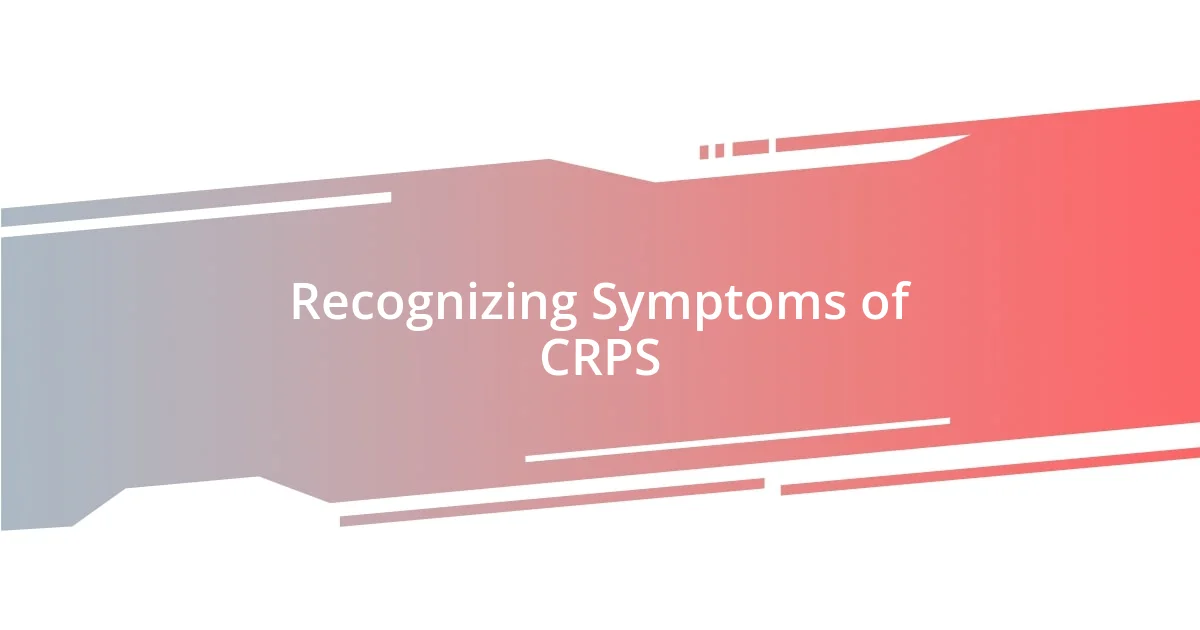
Recognizing Symptoms of CRPS
Recognizing the symptoms of CRPS can be a real challenge, especially since they often manifest differently for each person. For me, the most shocking symptom was the extreme sensitivity to touch. I recall a day when even my sock felt like sandpaper against my skin. Have you ever had an experience where something so innocuous suddenly turns into a source of discomfort or even pain? That’s how it felt for me.
Another prevalent symptom is the noticeable changes in skin color and temperature. I will never forget how my leg would sometimes appear a vivid shade of red, almost like it was a beacon of my suffering. These visual signs can serve as indicators for both myself and my medical team, prompting important conversations about my treatment. As you read this, I encourage you to pay close attention to how your body reacts, as these tiny details can offer powerful insights into the condition.
The swelling in affected areas is also a significant symptom I’ve encountered. On days when I felt particularly inflamed, even the most casual movements would remind me of my limits. It’s crucial to recognize these physical manifestations because they help in articulating our experiences to healthcare professionals. Awareness can foster better understanding, not only for ourselves but also for those who support us in this journey.
| Symptom | Description |
|---|---|
| Skin Sensitivity | Extreme sensitivity to light touch; even soft fabrics can feel painful. |
| Color and Temperature Changes | Skin may turn red, purple, or show variations in temperature compared to surrounding areas. |
| Swelling | Visible swelling in the affected limb or area that can hinder movement. |
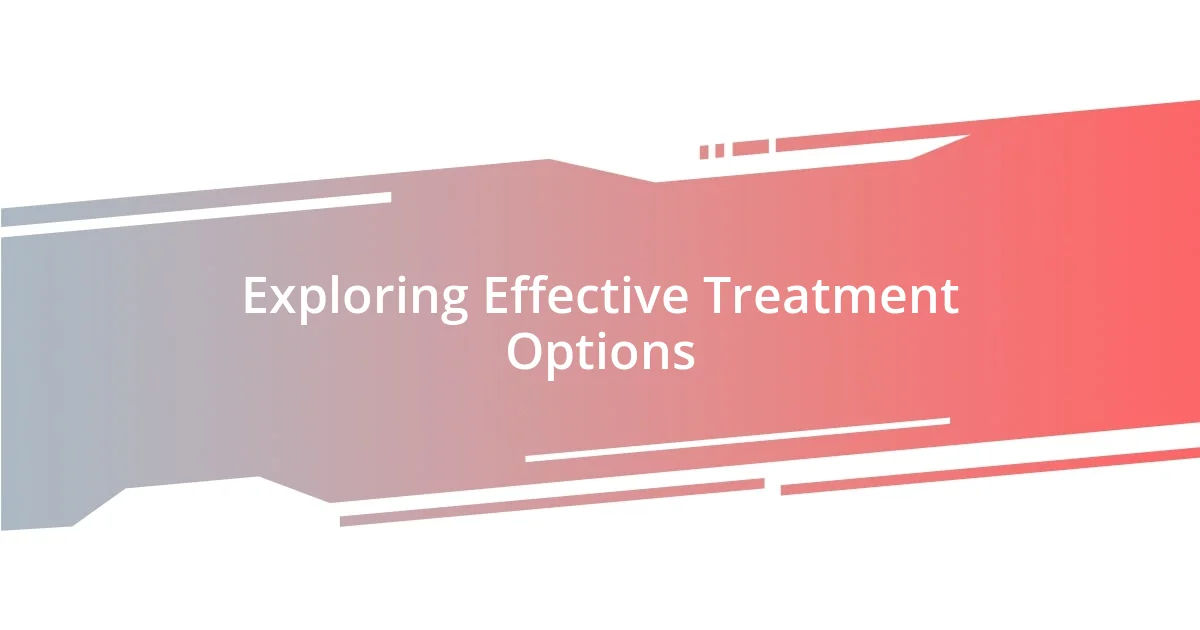
Exploring Effective Treatment Options
Exploring treatment options for CRPS has been a journey of trial and error for me. Initially, I was overwhelmed by the sheer number of potential therapies available. I remember sitting in my doctor’s office, scanning through pamphlets that promised relief, but left me feeling even more confused. It wasn’t until I tried a combination of approaches that I began to notice subtle changes in my pain levels and overall well-being.
Here are some treatment options that have shown promise:
- Physical Therapy: Tailored exercises helped rebuild strength and improve mobility, albeit at my own pace.
- Medications: From pain relievers to anti-inflammatory drugs, they’ve been paramount in managing my daily discomfort.
- Nerve Blocks: I remember the first time I underwent this procedure; it felt like a leap of faith. The pain relief was a wonderful surprise and gave me a glimpse of hope.
- Psychological Support: Engaging in therapy has allowed me to navigate the emotional turmoil that often accompanies CRPS.
- Alternative Therapies: Practices like acupuncture or mindfulness have added layers of relief I never expected.
Finding the right mix is challenging but important. Each positive step, no matter how small, has reinforced my belief in the possibility of regaining some control over my life.
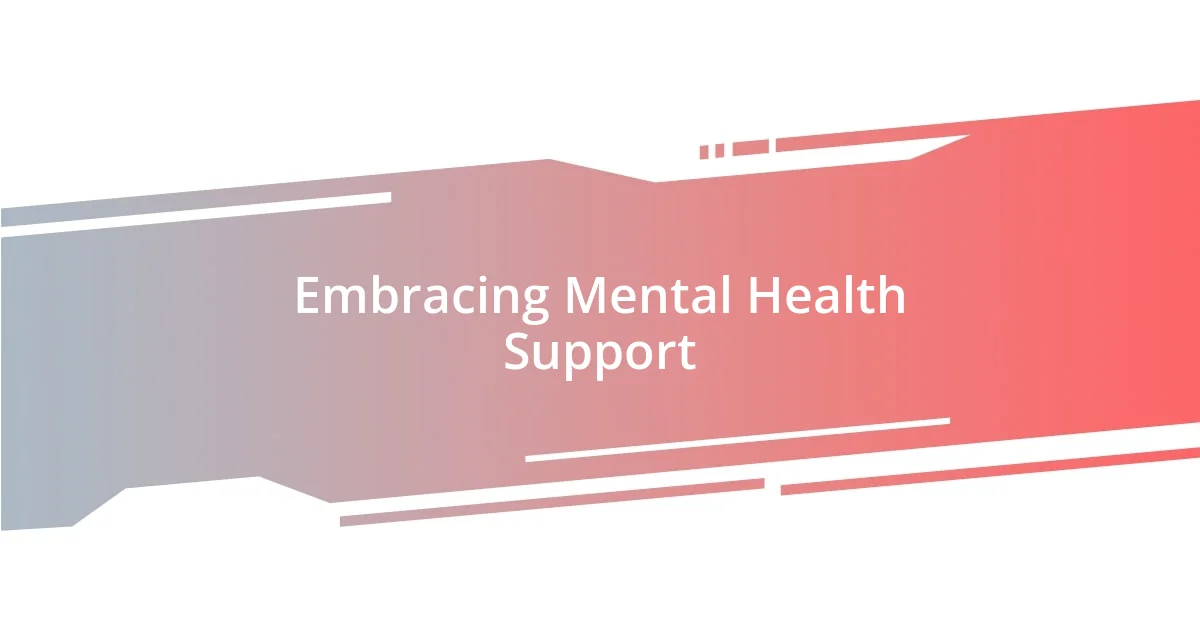
Embracing Mental Health Support
Embracing mental health support has been a revelation for me throughout my journey with CRPS. Initially, I hesitated to seek help, thinking that my pain was enough to handle alone. But once I started attending therapy sessions, I realized how valuable it was to verbalize my experiences, fears, and frustrations. Did you know that simply sharing your story can often lighten the burden? For me, it transformed my perspective and made me feel less isolated in my struggles.
I vividly remember one session where I opened up about the overwhelming sense of hopelessness that would sometimes envelop me. My therapist guided me through cognitive behavioral techniques, which empowered me to challenge those negative thoughts. The realization that I could influence how I responded to my pain felt incredibly liberating. It was as if I finally had tools to fight back against the emotional toll of CRPS.
Support groups, too, have been a lifeline. Connecting with others who share similar experiences has brought me immense comfort. One evening, I shared a laugh with a fellow member about our ‘battle scars,’ a moment that put things into perspective. Who would have thought that humor could thrive amid such serious discussions? Ultimately, embracing mental health support has helped me find hope and resilience, reminding me that I don’t have to navigate this journey alone.
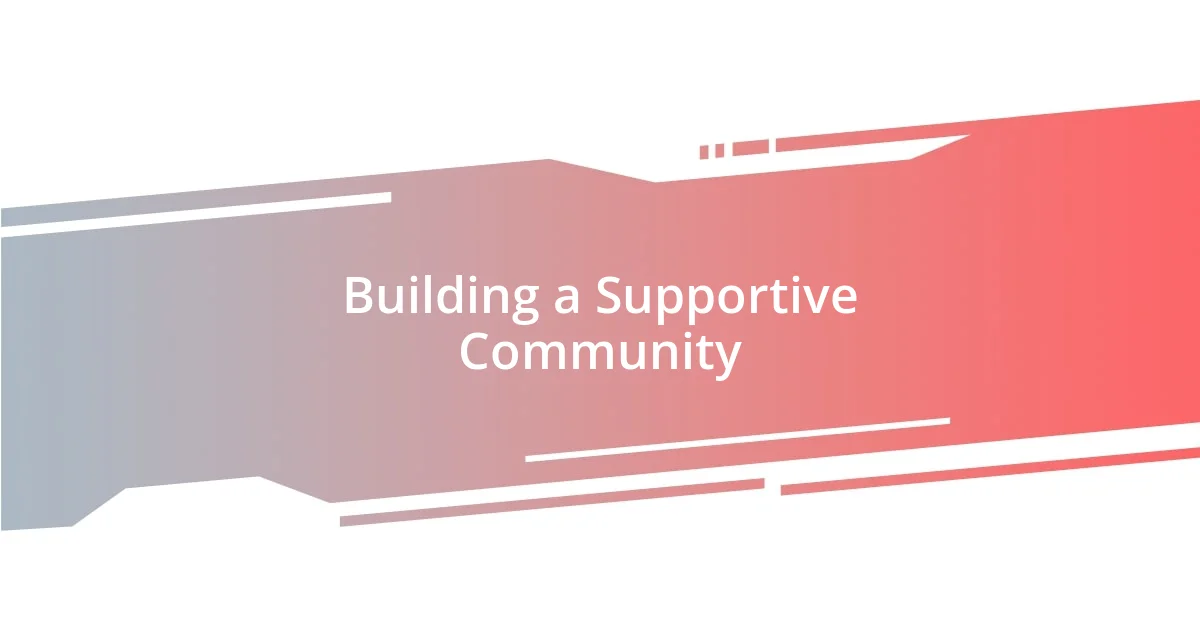
Building a Supportive Community
Building a supportive community was truly a game changer in my CRPS journey. I fondly remember the first support group meeting I attended; as I walked through the door, a wave of nervousness washed over me. But as soon as I heard those familiar stories, each person sharing their own battles, I felt an instant connection. Have you ever felt so seen and understood that it almost brought tears to your eyes? That was my experience, and I knew that I wasn’t alone anymore.
As I became more involved in the community, I noticed how important it is to cultivate relationships with others who truly “get” your struggle. Who would have guessed that sharing the most challenging aspects of my life could foster such profound connections? I found myself texting a new friend from the group after bad days. Those small check-ins, a simple “How are you holding up today?” made all the difference. They served as gentle reminders that even when things felt overwhelming, I had people on my side, ready to listen.
I also realized that building a supportive community meant not only receiving help but giving it, too. One day, I initiated a virtual meet-up so we could all share coping strategies. I was amazed at how our experiences intertwined, showing us all that support is a two-way street. Hearing others’ perspectives helped me grow, and contributing to their journeys brought me a sense of purpose. Isn’t it incredible how sharing our strength can empower both ourselves and those around us?
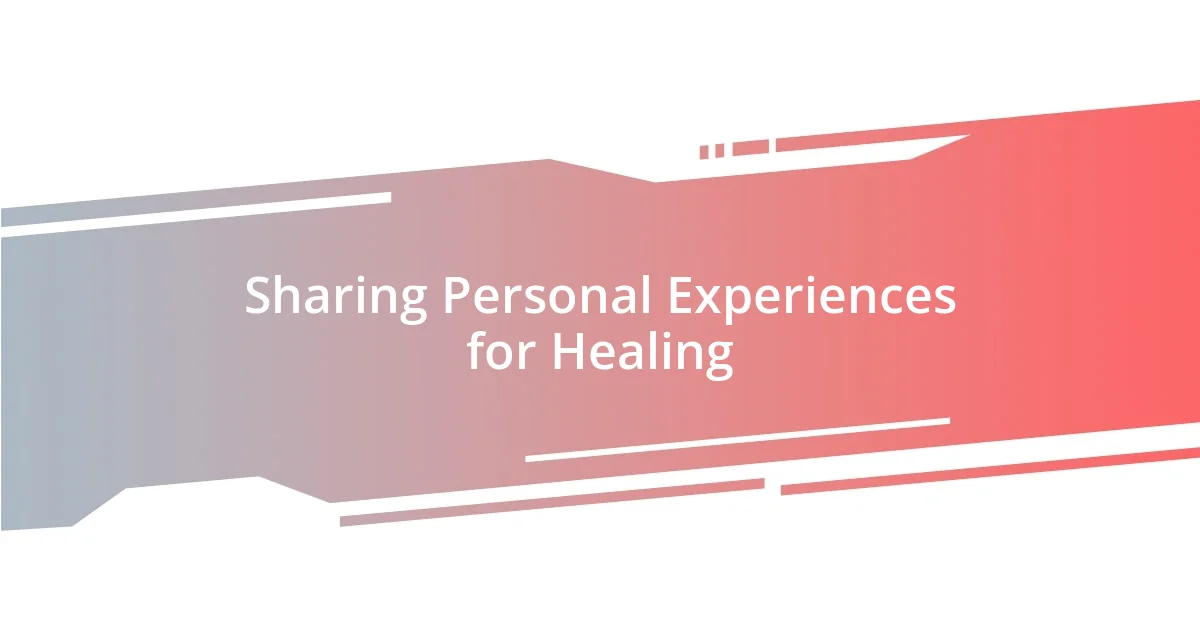
Sharing Personal Experiences for Healing
Sharing my personal experiences has become an essential part of my healing process. I remember sitting in a small circle during a support group, sharing my story for the first time. It felt like I was unshackling years of pent-up emotions. Have you ever felt the weight of your words lift once you finally spill them out? It was an incredible relief, and I could see the same relief reflected in the eyes of others as we connected through our shared struggles.
I’ve also discovered that writing about my experiences serves a dual purpose: it helps others and allows me to reflect on my own journey. In a recent blog post, I opened up about a particularly challenging episode when CRPS left me feeling trapped in my own body. The flood of supportive comments that followed reminded me that vulnerability can be powerful. Who knew that a simple act of sharing could spark conversations and inspire others to feel comfortable doing the same?
The beauty of sharing our stories is that they create ripples of connection. After one of my emotional revelations in a group chat, I found someone reached out, sharing that my story mirrored their own. In that moment, I realized that each story isn’t just a personal narrative; it’s a thread woven into the larger tapestry of healing. How amazing is it to think that by simply being open, we can foster understanding and hope? Embracing this attitude of shared discourse has truly transformed my approach to not just my healing, but also to the relationships I’ve built along the way.
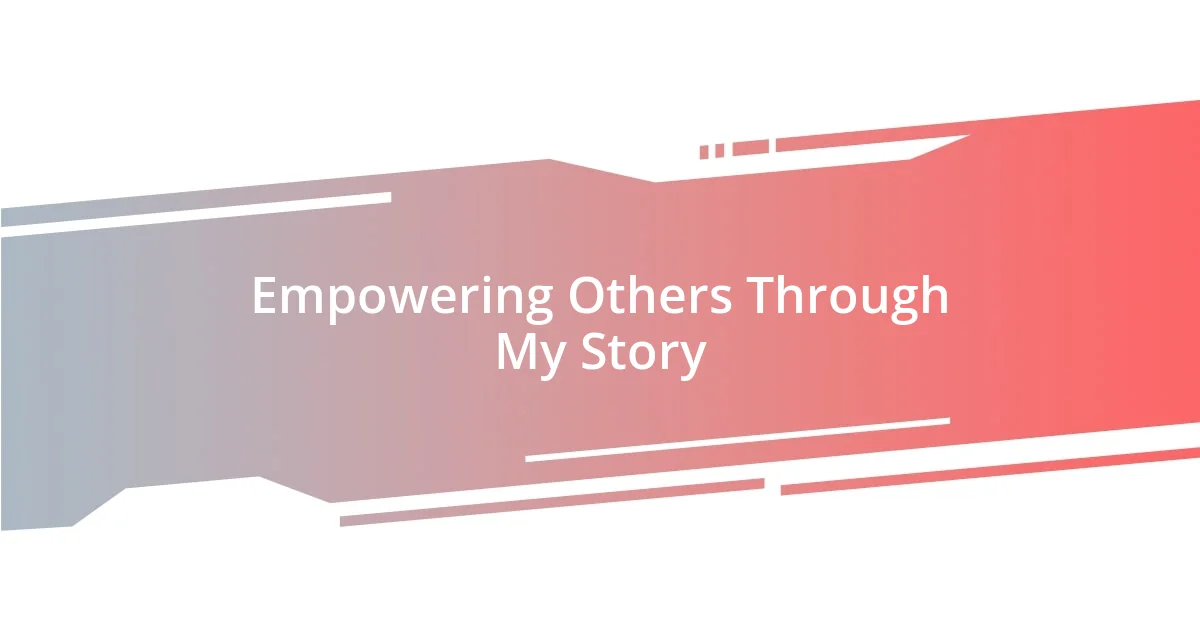
Empowering Others Through My Story
As I reflected on my CRPS journey, I realized that empowering others through my story has become one of the most meaningful aspects of my healing. Recently, after sharing my experience at a local workshop, a participant approached me and said my words inspired her to confront her own struggles. Isn’t it incredible how just one story can spark hope in someone else? That moment reminded me that vulnerability is not a sign of weakness, but a beacon that can illuminate the path for others seeking solace.
Through my experiences, I understand the power of connection in overcoming adversity. I recall a conversation with a woman at a health fair who was hesitant to share her story due to fear of judgment. Can you relate to the anxiety that comes with opening up? I encouraged her by sharing my own fears before stepping into the spotlight. By the end of our chat, she was not just smiling; she was inspired to share her journey in her own words. These small interactions reinforce my belief that when we empower one another, we contribute to a larger revolution of resilience.
I often think about how each person’s story can be a lifeline. For instance, there was a time when I felt lost and overwhelmed. Sharing that feeling in a group led to others opening up about their low moments. It struck me how mutual sharing created a sacred space where no one felt alone anymore. How often do we underestimate the weight of our experiences? By embracing and sharing my story, I feel like I am not only healing myself but also lighting the way for those who might feel trapped in their pain.
